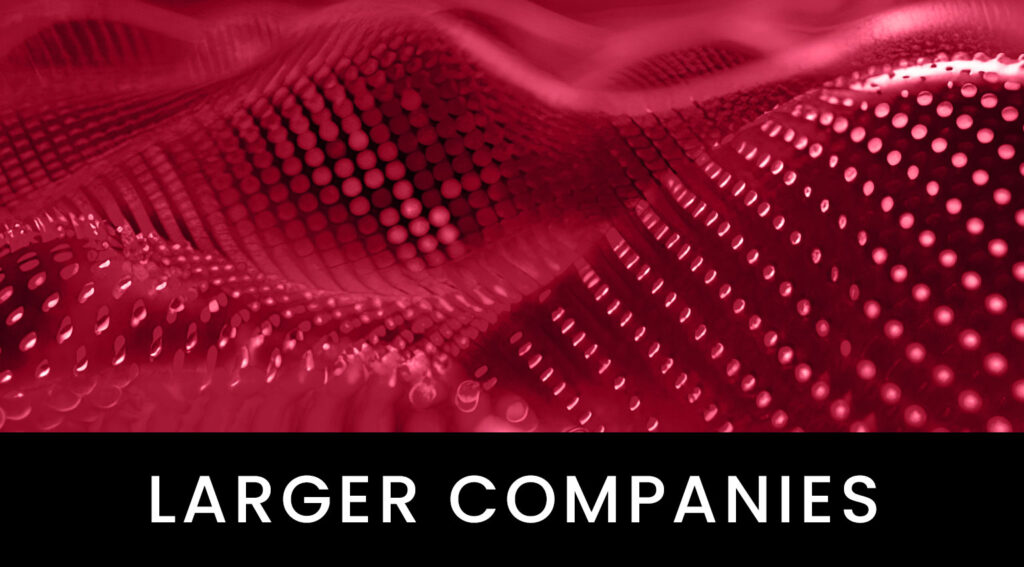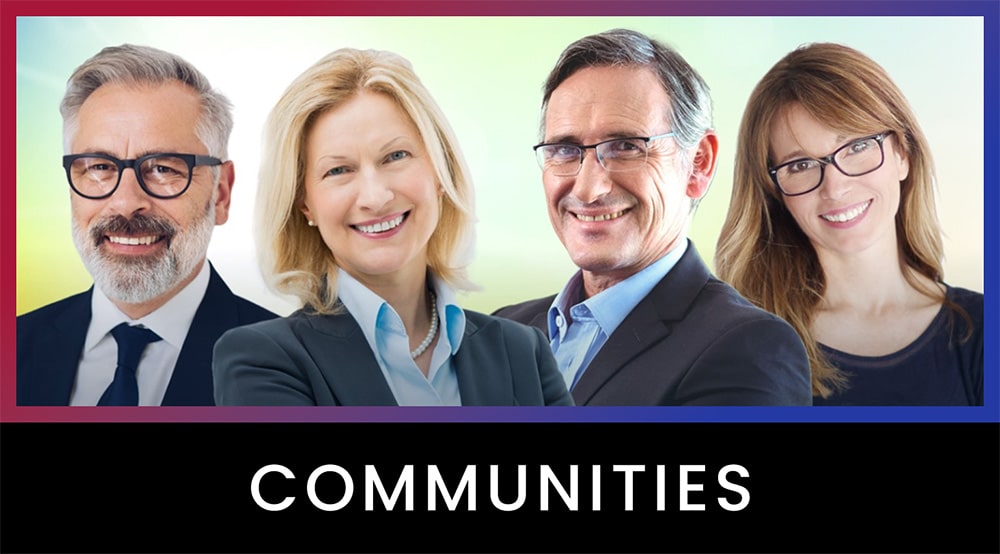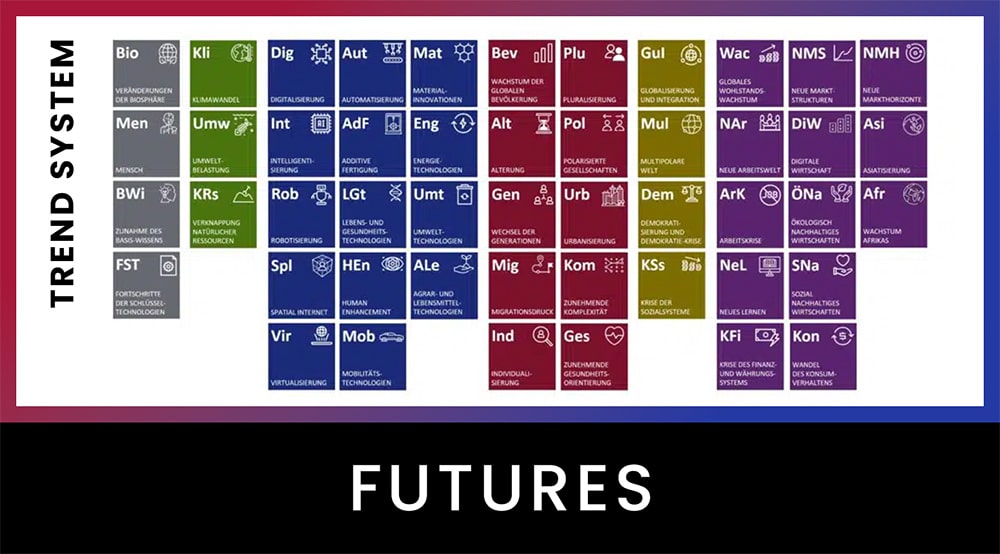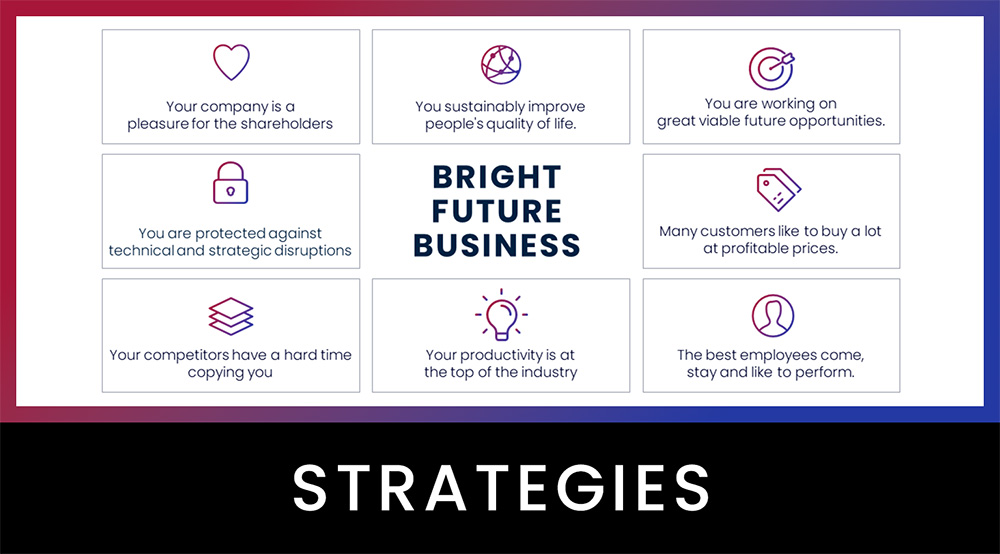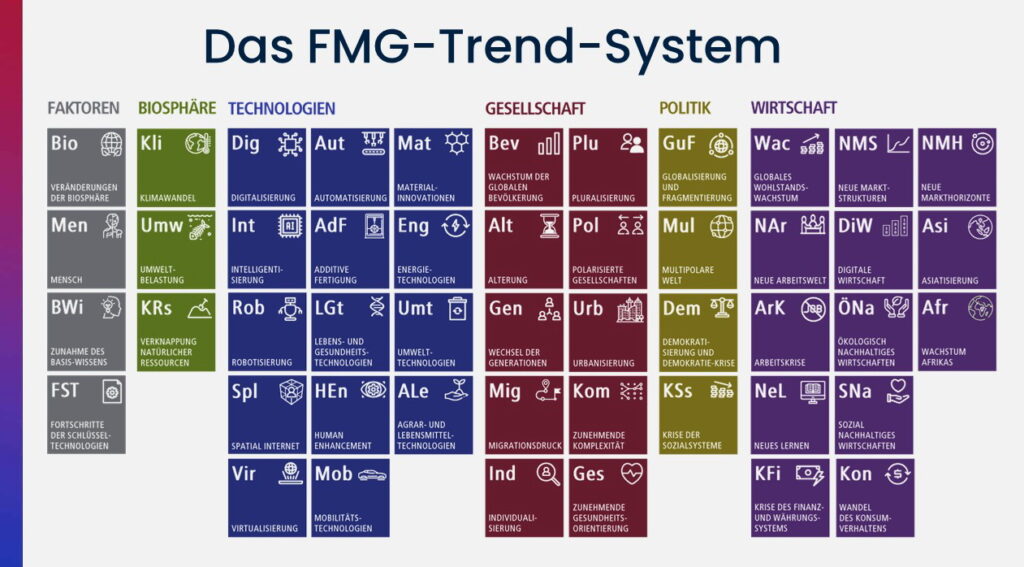Ageing megatrend
From the FMG Trend System: For your future-proof company
Why the ageing of society is an important driver
Life expectancy is rising, birth rates are falling – worldwide, but particularly in developed countries. Demographic change is having a profound impact on labor markets, consumer behavior, politics and healthcare. The megatrend of ageing is changing both the age structure of the population and perceptions of life in old age.
Ageing is not an isolated phenomenon, but is closely linked to other developments such as individualization, health orientation and technological advances. While challenges such as care bottlenecks, a shortage of skilled workers and financial burdens on social systems are increasing, new opportunities are opening up at the same time: for an economy that takes older target groups seriously. For technologies that enable self-determined ageing. And for companies that strategically exploit the potential of an ageing society. To the overview of all megatrends

What does the ageing megatrend mean for companies?
The ageing of society is changing markets and workforces. Companies must adapt to an ageing customer base – with products, services and communication that reflect the reality of their lives. At the same time, demographic developments require new answers to the challenges of recruiting staff, knowledge transfer and workplace design.
The economic relevance of older people is increasing significantly. The older generation has purchasing power, time and a desire for quality, safety and health. Companies that interpret this megatrend correctly will tap into new target groups, strengthen their attractiveness as an employer and create the conditions for long-term competitiveness.
- Societies are changing profoundly, in their structure, their values and their behavior. The megatrend of ageing is just one of many that could be relevant for the future of your business.
- FMG’s trend system makes these complex social developments tangible.
- In addition to megatrends from society, politics, the economy, technology and the biosphere, it also includes future factors as drivers of change.
- You can find out more about megatrends on our page Overview of all megatrends.
Key developments in the ageing megatrend
1. ageing societies
The demographic structure of many societies is changing fundamentally. Falling birth rates and increasing life expectancy mean that the proportion of older people is growing steadily. As a result, the age distribution is shifting – fewer young people and more older people will shape society, politics and the economy in the future. While ageing societies are confronted with growing social, economic and infrastructural challenges, new opportunities are also opening up in the form of intergenerational learning, political scope and new economic target groups.
Examples of these profound shifts are:
Demographic structural change: The traditional population pyramid is toppling – many countries are experiencing an ageing population.
Skills shortage due to retirement: The large number of retirements is leading to a noticeable gap in the labor market.
Intergenerational contracts under pressure: Pay-as-you-go systems such as pension and health insurance are increasingly coming under pressure.
Silver politics: Political debates and decisions are increasingly influenced by older voter groups.
Age as a political force: Seniors’ representatives and lobby organizations are gaining visibility and influence.
Age discrimination: Despite their experience, older people are socially or professionally disadvantaged in many areas.
New images of old age: The image of the passive retiree is giving way to that of the active, vital and self-determined senior citizen.
Technology acceptance in old age: Digital technologies are also being used more and more frequently and as a matter of course by older target groups.
2. increasing life expectancy
Thanks to better medical care, healthier diets, reduced workloads and a growing focus on health, average life expectancy is rising continuously. More and more people are reaching a very old age – and staying active, fit and socially integrated for longer. While this development opens up new life prospects, it also creates new requirements for forms of housing, healthcare and dealing with old age.
This development is changing numerous areas of life:
Active ageing: Many older people remain physically and mentally fit – they get involved in voluntary work, culture or further education.
More working years: The transition to retirement is becoming more fluid, the retirement age is rising – and with it the need for age-friendly working models.
Nursing crisis: The growing need for nursing staff and infrastructure is becoming one of the biggest challenges facing society.
Longevity Economy: A booming market for age-appropriate products and services is emerging – from mobility to financial advice.
Age-appropriate living: Accessibility, smart homes and neighborhood networks are becoming key requirements for housing.
Prevention instead of repair medicine: Prevention, early detection and behavioral medicine take the place of reactive treatment.
Focus on quality of life: The focus is shifting from mere survival to shaping a fulfilling, healthy old age.
3. anti-aging
The desire to slow down or even reverse the ageing process is driving innovation in medicine, lifestyle and technology. What used to be reserved for cosmetics is now a broad research and industry sector. It is no longer just about wrinkle-free skin, but about cell rejuvenation, prevention of age-related diseases and healthy longevity. Anti-ageing reflects a changed relationship to ageing – between health culture, self-optimization and ethical debate.
The spectrum of developments ranges from high-tech research to lifestyle applications:
Longevity tech: Biotech start-ups and pharmaceutical companies are researching ways to rejuvenate cells and genetically regulate ageing.
Biohacking & self-optimization: People are taking nutrition, sleep, supplements and physical routines into their own hands.
Aesthetic medicine: Botox, Hyaluron & Co. have reached the center of society – age delay as a lifestyle standard.
Hormone therapies & anti-ageing drugs: Pharmacological interventions to delay ageing are gaining in importance – with high growth rates.
Well-aging instead of anti-aging: The focus is shifting from external appearance to well-being, balance and functionality.
Lifestyle medicalization: Wellness and medicine are merging – DNA-based nutrition and personalized vitality programs are setting new standards.
Age individualization: Dealing with ageing is becoming increasingly individual, personalized strategies and offers are becoming mainstream.
Boundaries of ethics & regulation: New procedures raise questions – about accessibility, justice and the definition of “normality”.
Conclusion
The ageing of society is permanently changing consumption patterns, working environments and political power relations.
Economic opportunities arise above all where older target groups are taken seriously and actively addressed.
Employers must create age-appropriate structures – from personnel development to ergonomic workplaces and corporate culture.
Markets relating to health, safety, housing and mobility are gaining massively in importance.
- With the Future Radar Program, you can identify how the megatrend of ageing is specifically affecting your company and which strategic opportunities you can benefit from.




